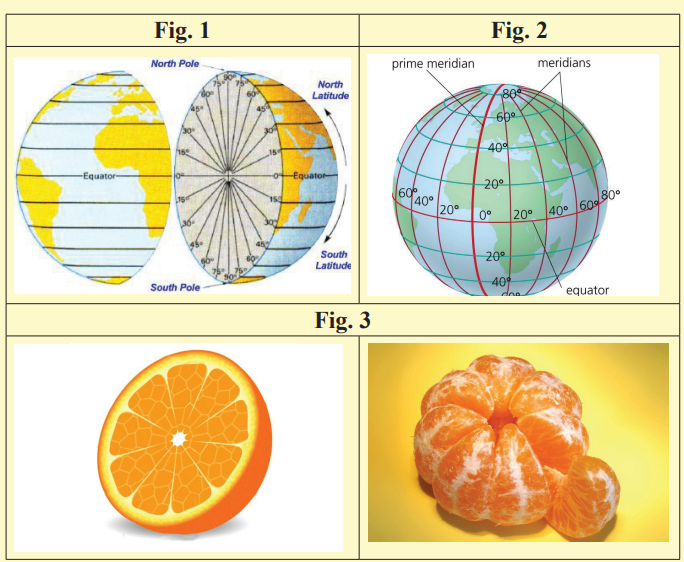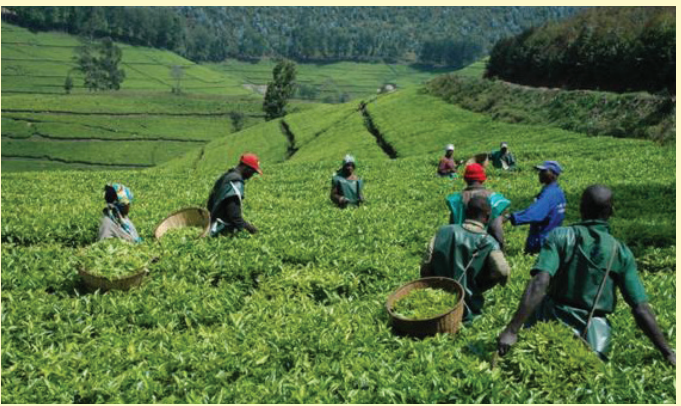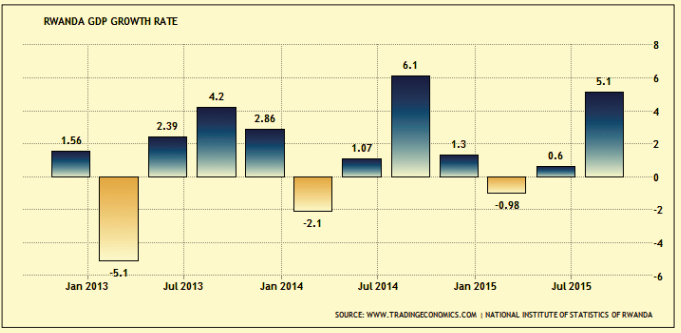UNIT 4:Fractions and Percentages
My goals
After studying this unit, I will be able to:
⦿ Do calculations and percentages, write in numbers and talk through
the working orally.
⦿ Read calculations, or texts on the Rwandan economy.
⦿ Plan, write and evaluate texts on the Rwandan economy.
⦿ Discuss the Rwandan economy, paying attention to percentages.⦿ Appreciate the role of Mathematics and Science in our daily lives.
Calculating with fractions
# Language use: Listening and speaking
Activity 1
Look at the loaf of bread in Fig.1 and the bread cut into slices in Fig.2.Why do you think the loaf of bread is cut into toasts or slices?

On the basis of the photographs answer these questions
1. How many slices make up the whole loaf of bread?
2. Suppose Kaneza eats 9 slices out of 18 slices, describe the bread
she has consumed as a percentage.
3. Suppose a family consumes two-thirds of the bread, describe the
amount of bread that will remain.
4. Express the bread the family has consumed as a percentage.
5. Assuming there were 100 slices and Kaneza ate as much as she
ate out of the 18 slices of bread, find and describe the amount of
bread she would have consumed.
6. Now express the fraction Kaneza would have eaten out of 100 asa percentage
Activity 2
1. Get an orange. Peel it and divide it into 2 equal parts. If you eat a
half, what percentage of an orange would you have eaten?
2. Suppose you divide the orange into 4 equal parts, and you eat one
of them, express the fraction of the orange eaten as a percentage.
3. Assuming you divided the orange into 5 equal parts and you consumed
two-fifths, what percentage of the orange would have remained?
4. Cut the orange into 10 equal parts. Suppose you eat 7 pieces out
of the ten.
(a) What fraction would you have eaten?
(b) What percentage of the orange would remain?
5. If one eats three-quarters of an orange:
(a) Convert and describe what he/she has eaten into a decimal
fraction.
(b) Express and describe what he/she has eaten as a percentage.
6. If Nkurunziza and Mukantamage shared 18 slices of bread.
Nkurunziza got 12
18 and Mukantamage ate a third of Nkurunziza’s.
(a) How many slices did Mukantamage eat?
(b) How many more slices did Nkurunziza eat than Mukantamage?
7. Describe the amount of the bread that was not eaten as a fraction
and as a percentage.
8. Describe the difference between the amount of bread Nkurunzizaand Mukantamage ate as a percentage.
Activity 3
Discussion
Get two oranges, tomatoes, pineapples or any other fruit. Cut the first
one into two equal parts and the second one into four equal parts.
Exercise
Answer these questions and compare your answers.
1. How do we call each of the two equal parts cut from the fruit?
2. How is each part of the four equal parts called?
3. How many quarters make a half?
4. How many quarters are there in three quarters?
5. How many quarters are in two halves?
6. Express the following as decimal fractions.
(a) A quarter
(b) A half
(c) Three quarters
(d) An eighth(e) A third
Application of fractions and percentages in
our daily lives
Activity 1
Discussion
Convert the marks you scored in the end-of-month’s or end-of- term
examinations as fractions. Express the fractions as decimals and describe
them to your class members.
Activity 2School community
1. Count the number of learners in the school and express the number
of girls as a percentage.
2. Express the number of boys as a percentage and a fraction.
3. Express the number of newcomers in the school as a percentage
and a fraction.
4. Express the number of absentees as a percentage and a decimalfraction.
Activity 3
Clinic or hospital
Go to a nearby clinic or hospital. Inquire from the medical staff the
diseases that affect people in the community and their respective specific
numbers.
1. Draw a table to record or represent the data collected. Express the
patients treated per sickness as a percentage as well as a fraction.
2. Use the percentages to determine the common sicknesses in the
area.
3. Identify the diseases which have equivalent numbers of patients.
4. If you are in charge of health in your district, suggest measures
you would recommend for your people to mitigate the common
sicknesses. Present your ideas in an essay or paragraph form.Activity 4
Market or shop
Visit a nearby trading centre. Inquire from the traders about the foodstuffs
which are on high demand and those which aren’t demanded often by
customers. Record the different food items sold in the market or shop
and count the number of traders dealing in each item. Present your datain a table.
Exercise
Answer these questions
1. Express the number of traders per item as a percentage and a
fraction.
2. Compare the items which have an even number of traders with
those which have an odd number of traders.
3. Use the percentages and fractions to determine the commonest
foodstuffs consumed in the community
4. Discuss the reasons why you think these items are on high demand.
5. Supposing you are a trader in that community, what items wouldn’tyou trade in? Give reasons for your opinion
Activity 5
Transport

Visit a busy road. Observe and count the number of vehicles passing
on the road for one hour.
1. Draw a table to record your data.
2. Use the data in the table to express the following in percentages,
fractions and decimal fractions.
bicycles; salon cars; buses; lorry; motorcycles
Assuming you want to invest in transport business, use the data to
describe the type of transport business you would engage in andgive reasons for your choice.
Activity 6
Extend your thinking! GeographyLook at the orange and study the earth in the photographs below.
(a) What relationship do you think exists between the orange
and the globe?
(b) Explain how geographers can use the knowledge of the slices
of the orange and apply it to the globe to locate places on
earth, countries and continents.
(c) Find out how geography use longitudes to measure the time
of a place (time zone). Share your findings with other group
members.
(d) Express and describe the main longitudes and latitudes on
the globe in Fig. 2 as fractions and percentages.
(e) Discuss the main importance of the Equator and Greenwich
to geographers.Activity 7
Research
Visit your population statistics bureau or use its website if your school
has a computer laboratory with internet. Find out how fractions and
percentages are used to describe the population census of Rwanda.Listening practice
Activity 1
Your teacher will read to you a passage about the summary of an
imaginary Rwanda National Budget by the Minister of Finance. Pleaselisten carefully
Activity 2
Gap filling
Use the information you heard from your teacher to complete the passage
below.
Good evening .............. of Rwanda. I am ................... to present the
summary of the national budget allocations. The salary of civil servants
has been increased by .................... The education sector has been
allocated FRW 5 billion. The ................... sector has been allocated
15% more than the education sector. The ICT sector has been allocated
.............. more than the education sector. The tourism sector has been
allocated 5% less than the ................... sector. Security has been allocated
10% more than the education sector.
The industrial sector has been allocated ................... more than the
education sector. Finally, the .......... sector has been allocated 12%
................... than the education sector. This is the final financial
................... from the Ministry of Finance.
With the recent ................... in financial research and credit control
systems, we anticipate the exports to increase by .................... The
national ................... will grow by 3.4% and imports will drop by 0.2%
in the next ................... months. This will account for a steady and
................... economic growth hence controlling inflationary gaps in
the Rwandan economy.I thank you for listening to me.
Activity 3
Use the information above and answer the following
questions.
1. If the salary of a teacher was FRW 150,000 before the reading of
the national budget, what is his or her new salary?
2. Find the sector that was allocated the highest percentage and
explain why you think that sector was given the biggest share of
the national budget allocation.
3. Calculate how much money was allocated to the following sectors:
(a) Agriculture
(b) Security
(c) Tourism
(d) Health
(e) Industry
4. How much more money was allocated to agriculture than the
health sector?
5. What was the national total budget?
6. Express the given decimals in the passage as fractions and
percentages
7. Explain how the relationship between the exports and imports will
account for a steady and sustainable economic growth in Rwanda.
8. Write your own sentences using the following words in the box
below to show that you have understood their meaning.
quarter; fifth; denominator; decimal; percent; divide;
multiply; worth; account for; import; industry; equivalentto; figures
Activity 4
Think of other situations where fractions and percentages can be used
to solve our problems in our daily lives. On the basis of the applications
you have discussed, explain how the concept or idea of fractions and
percentages in Mathematics helps in solving problems in our daily lives.Share your answers with your classmates.
Activity 5
Puzzle
Think about this!
A man has three children. The eldest is 0.5 years of the father’s age.
The last born is 0.4 years of the eldest child’s age. The second born is
twice as old as the last born.
1. Assuming that the father is 50 years old, find and describe how
old each child is.
2. Express the age of each child as a fraction of the father’s age.
3. Suppose the father is 100 years, how old will each child be?Compare your answers with other classmates.
Activity 6
Research (quantitative data analysis)
Visit different nearby health centres. Ask the medical personnel to
provide you with information about the rate of HIV/AIDS infections
in the current year as compared to the previous years. Write a reportabout your findings and compare your answers with other classmates.
Activity 7
Drama project
Organise a drama scene in which the spread, symptoms and preventionof HIV/AIDS are depicted.
Calculating with percentages
Activity 1
Dialogue
Gashumba: Hello Mutesi. I’m carrying out research about the gender
and the employment sector in Rwanda. Could you please
be of help and offer me some advice?
Mutesi: Most certainly.
Gashumba: What is your general view about women’s enrolment in
universities? Has it increased compared to what it was before?
Mutesi: Oh, yes! Women’s enrolment in universities has increased,
but, as a whole, women still attain lower educational
levels than men. Men and boys remain more likely than
women to receive education and training in Rwanda.
Gashumba: Could you provide me with some statistics to back up
your argument.
Mutesi: Well, literacy rates are estimated at 47.8 percent for
women, 58.1 percent for men. 25 percent of women have
never attended school, compared with only 17 percent of
men.
Gashumba: How about apprenticeship programmes?
Mutesi: Just 5.8 percent of Rwandan women benefit from
apprenticeship training compared to 9.1 percent of men.
Gashumba: Could you please make for me a comparison in the
vocational training sector?
Mutesi: Only 2.6 percent of women receive vocational training
compared with 7.3 percent of men.
Gashumba: Of the rural areas and the towns, where are the differences
in women’s education sharply felt?
Mutesi: These disparities are even more dramatic in rural areas,where the majority of Rwandan women live.
Activity 2
Conduct research about any sector of the economy that interests you.
Find out the percentage or fraction distribution between men and women
or girls and boys in Rwanda. Compose your dialogue about the situation.Compare your dialogue with those of your classmates
Describing the Rwandan economyActivity 1
Study the photograph below carefully. It is about agriculture in Rwanda
Composition
Write a composition detailing the contribution of agriculture in
Rwanda. In your composition discuss the various forms of agricultural
activities, expressing them in fractions and percentages. Compare yourcomposition with those of your classmates.
Activity 2
Research
Visit your computer laboratory to research into activities that contribute
to Rwanda’s economic development. Write sentences expressing their
contribution in percentages or fractions. Share your answers with otherclassmates.
Activity 3
Graphical data interpretation
Study the graph and write a paragraph describing Rwanda’s GDP growthrate since 2013. Compare your answers with other classmates

Reading and comprehension
Activity 1
Read and enjoy the following passage about the Rwandan
economy. Express your views about some of the issues as you
read the passage.
The growing appetite for Rwandan vegetables abroad is pressing local
farmers to transit from subsistence to commercial farming to meet the
growing demand.
Since 2011, vegetables have boosted the country’s exports value by
$20M, with an average of 7% growth every year. In 2011, Rwanda
earned $4M, increasing to $5M and $6M in 2012 and 2013 respectively,
then dropping to $5M in 2014 due to reduced productivity.Rwanda could turn into regional hub for horticulture
Emmanuel Hategeka, former Permanent Secretary, Ministry of
Commerce and Industry, told KTPress that there is a huge demand for
Rwandan vegetables, fruits and flowers, around the world owing to
their quality.
All fruits are organic and grown on fertile volcanic soils under tropical
weather conditions, ideal for quality yields, but the majority of Rwandan
farmers grow the fruits and vegetables at a subsistence level.
Rwanda is seeking more investors to increase volumes. Two potential
investors from Mauritius and Kenya have expressed interest in vegetable
and fruit growing and should begin exporting late this year.
Some of the major vegetables and fruits grown in Rwanda include
onions, cabbage, tomatoes, baby peas, avocados, carrots, passion fruit,
pineapples and maize.
Most of them are exported to the DRC, but there are other bigger markets
such as the UK, Belgium, the Netherlands and France. Other exportdestinations include Burundi and Uganda.
During the vegetable and fruit exports peak in 2013, Hategeka said,
Rwanda was experiencing both informal and formal cross-border trade
within regional markets.
Meanwhile, as part of the effort to increase volumes of vegetables and
fruits, there is also an opportunity for investing in cold chain storage
facilities from farm gate to the market.
Currently, Rwanda has one cold facility, at the Kigali International
Airport.
There is urgent need to invest in cold chain facilities to ensure the
vegetables and fruits don’t lose the required standards, especially on
the international market.
However, Dieudonne Musafiri, an Imports Manager at Akagera Business
Group, says, “Cold chain refrigerated trucks are expensive, but it is a
lucrative business because there is high demand for them. There wouldn’t
be any losses incurred.”
Despite the shortage of cold storage facilities, high transport costs to
international markets is another major obstacle facing the sector.
For example, exporting one kilogram of vegetables to Europe costs
$2.5. The trade ministry says it is helping exporters to negotiate for at
least $1 per kilogram.Source: KT Press (Umuhinzi)
Answer these questions
1. How has the demand for vegetables abroad boosted vegetable
growing in Rwanda?
2. Express the revenue loss Rwanda suffered as a percentage.
3. Account for the drop in the percentage you have mentioned above.
4. Explain what makes Rwanda an ideal fruit growing environment.
5. How will the investors boost fruit and vegetable growing in
Rwanda?
6. Compare the cold chain storage facilities with farm gate to the
market.
7. By having one cold storage facility, how does this situation affect
Rwanda’s fruit and vegetable industry?
8. Analyse other hindrances to fruit and vegetable farming and
suggest possible interventions that can help the local farmers
